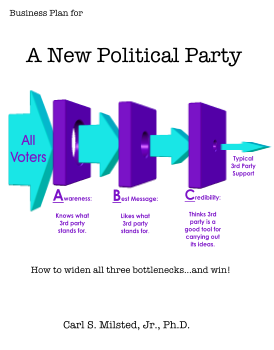General Motors vs. McDonald’s
The automotive industry is a huge overhead business. If you are not selling millions of cars, you are on the way to bankruptcy. It can take hundreds of millions, if not billions, of dollars to develop new automotive technologies, and hundreds of millions more to build the assembly lines that implement the new technologies. It can pay to invest hundreds of thousands of dollars in robots and specialized tools to shave pennies of the price of certain parts.
Given this high overhead and huge economies of scale, it pays to reuse parts in multiple models. It pays to have dealer networks targeted to particular demographics. It is critical to have a very large geographic market in which to spread this overhead cost. Auto manufacturing is an international business.
Niche marketing is very difficult in this industry. There are few small independents in the business. Such small independents survive generally by selling very expensive sports cars, catering to small demographics, but still, usually over multiple countries.
McDonald’s has the opposite business model. The unit of investment is a single franchise; and the capital comes from the franchisee.
Yes, McDonald’s has some high overhead operations. They achieve huge economies of scale in advertising, purchasing, printing, etc. But all this is icing on the cake.
McDonald’s became successful by perfecting the operation of one restaurant. Once the single restaurant was made wildly successful, the formula was simply copied repeatedly. The marketing and purchasing economies of scale came later.
So, guess which marketing model the Libertarian Party adopted?
The answer: GM.
From the beginning the Libertarian Party has run presidential campaigns. From the beginning, the LP has struggled with large overhead tasks such as getting 50 state ballot access, getting national media attention, paying full-time national staff.
And since the LP has always been under-funded, the results have been poor. Overhead costs have resulted in a high average cost of doing real politics. Money spent on actual advertising has been very small compared to the overall donations raised. The LP’s economics are like the expensive sports car, but with one difference: if you spend a huge chunk of money of the sports car, you actually get the car; if you spend a huge chunk of money on an under-capitalized campaign, you get next to nothing.
I submit that a third party should model itself more on McDonald’s. The emphasis should be on perfecting the individual franchise (the county level party), and then replicating that success. The national office should exist to help spread the knowledge of running a good franchise, and provide economies of scale where appropriate, such as producing quality video ads, large scale printings etc.
Over the years many in the party have learned this lesson, and the party has moved more towards the McDonald’s model. Online schools and Candidate Tracker are excellent examples of using the central office’s resources to support the “franchisees.” I am by no means the first or the loudest advocate for moving emphasis away from presidential campaigns and other under-funded national level outreach. Others have taken the lead some time ago, and would have had more success except for the fact that the McDonald’s model…doesn’t work!
Currently, the LP targets a tiny niche demographic. Franchises are not stable; they come and go. An over emphasis on local organization would be the death of the party without fundamental change. Given the LP’s current market segment, the GM model is appropriate.
Successfully adopting the McDonald’s strategy requires adopting one of two possible fundamental changes which could make the local organization model viable:
-
Reach a wider demographic so that political success is more likely, and the pool of volunteers at the local level is high enough to allow rotating officers without losing continuity. Apply the lessons of Part 2.
-
Scrap election victory as a goal and focus on getting the word out. Have fun! This could keep local clubs going. This is the Ernie Hancock approach to LP activism.
These are mutually exclusive options. Either one could work. I pushed the first with insufficient success. Today, my own efforts are aimed at a new party, but those of you who still dream of turning the LP into a real political party are welcome to keep trying. Otherwise, the LP would do well to take the second option.
Previous
| 1
| 2 | 3
| 4
| 5
| 6
| 7
| 8
| 9
| 10
| 11
| 12
| 13
| 14
| 15
| 16
| Next
Copyright 2007, Carl S. Milsted, Jr. All rights reserved.
|






